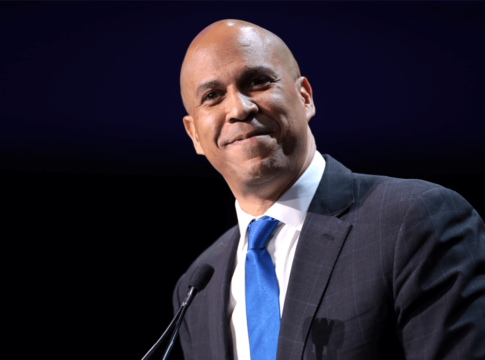Writing last week in the Wall Street Journal, my friend and long-time former co-author, Diane Ravitch, challenged resurgent Congressional Republicans to return K-12 education to “local control” and to repudiate and reverse the nationalizing/federalizing tendencies of No Child Left Behind, Race to the Top, Common Core standards, etc. Appealing to the GOP’s history as “the party of local control,” she urged the re-empowerment of local school boards and teachers-as-professionals as the proper remedies for what ails American education.
As in her much-discussed book, The Death and Life of the Great American School System, Diane has it half right. She pinpoints genuine shortcomings in NCLB and failings in a number of other federal education programs, and correctly observes that many of the school-reform efforts and innovations of recent years have not yielded the desired achievement gains.
But she’s wrong about the remedy for these failures and about the course that Republicans (and, for that matter, reform-minded Democrats) should follow in the days ahead.
The weak and generally stagnant academic performance of most American school kids, our scandalous achievement gaps, the country’s sagging performance vis-à-vis other countries, the skimpy preparation of many teachers and principals, the shoddy curricula, the fat and junky textbooks, the innovation-shackling union contracts, the large expenditures with meager returns—these are not the result of an overweening federal government. They are, in fact, almost entirely the product of state and local control of public education—as it has traditionally been defined and structured in the United States. They are the product of failed governance, bureaucratic mismanagement, and the capture of the K-12 system by powerful organizations of adults who assign lower priority to kids’ needs than to their own interests. They are maladies caused by, and worsened under, the aegis of the very system that Diane trusts to cure them.
It’s never smart to expect those who cause, or even those who tolerate, problems to be any good at solving them. Blithely consigning America’s education fate to the traditional structures of “state and local control” won’t work any better tomorrow than it did yesterday, and Republicans (and Democrats, too) should spurn such advice.
What they should do instead is re-imagine local control, clear out the dysfunctional bureaucratic underbrush, disentangle the responsibilities of different levels of government, make everyone accountable for their performance (as gauged primarily by student learning gains), quit throwing good money after bad, and unshackle education innovators and entrepreneurs so they can give their all to solving problems and creating alternatives.
Local control, properly re-imagined, is vested in individual schools—“mom and pop” charters are examples—that control their own personnel, budgets, schedules, and curricula, that are voluntarily attended by children whose families choose them, that are fully funded and freed from nearly all regulatory and collective-bargaining shackles, but that are absolutely transparent and accountable with regard to what they do, how they spend their money, what goods and services they buy from where, and, above all, how well their pupils do (or don’t) achieve.
Local control, properly re-imagined, is vested in parents free to choose among—and fully-informed about—a wide array of quality schools (and other education delivery systems, including virtual education), and in financing systems that vary the per-pupil amounts according to kids’ differing needs but then send every single dollar to the schools they actually attend, instead of allowing that money to get caught up in bloated central offices and unnecessary bureaucracy.
Local control, properly imagined, abolishes the quasi-monopolies of “school systems,” “central offices,” and system-wide collective-bargaining contracts. It treats every successful school as an independent, self-propelled entity, accountable for its governance to those who work in and attend it but accountable for its results to state-level performance-monitoring systems with authority and wherewithal to pull the plug on bad schools. Those state-level systems, in turn, are united—at least those that wish to be are—by voluntary national academic standards and high-quality tests, the results of which can be compared from school to school and state to state, and communicated to teachers and parents. Other unifying forces—and reasons to discard traditional districts—include well-run CMO’s and the burgeoning “virtual” options that leap across municipal and state borders.
Yes, Uncle Sam’s future role in all this is far less intrusive than today. Washington supplies additional funds to underwrite the education of disadvantaged and special-needs kids, it pays for innovation through competitive-grant programs, it conducts research and supplies a wealth of assessment and other data, and it safeguards individuals from violations of their civil rights. That’s about it.
What do such structural recommendations have to do with the successful teaching and learning that must be at the core of any well-functioning education system? First, they remove all sorts of obstacles and constraints. Second, they concentrate the resources and decision-making authority where they belong (as close as possible to the kids—Diane has that part right). Third, they clarify expectations and make everyone’s performance transparent. Admittedly, in the near term that doesn’t prevent a foolish teacher or ill-run school from selecting a bad reading program or substituting silly social studies for real history. It doesn’t ensure brilliant lesson planning or inspired instruction—but it does allow for tailored instruction and flexible teaching models. In the medium term, however, it frees principals to make changes and liberates parents to exit. And in the long run it makes the school’s very existence hinge on whether it delivers the goods.
That ought to be an approach for tomorrow that Republicans (and reform-minded Democrats) can embrace. But it’s a very, very different model than “restoring” the failed systems of yesterday.
—Chester E. Finn, Jr.





